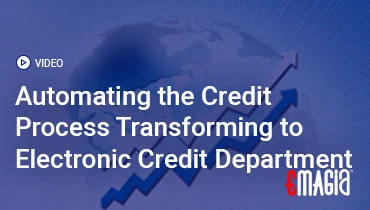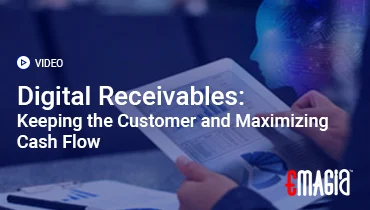1. Introduction to Invoicing Best Practices
Mastering invoicing best practices is essential for businesses to maintain healthy cash flow, avoid payment delays, and foster professional relationships with clients. With structured invoicing processes, companies can significantly reduce payment disputes, improve collections, and portray a strong brand image.
2. Invoicing Best Practices: Key Concepts and Fundamentals
2.1 What Is an Invoice? The Basics
An invoice serves as a formal document from the seller to the customer, detailing the goods or services delivered, the price agreed upon, and the terms under which payment is expected. An invoice acts as an official payment request and plays a vital role in financial documentation.
2.2 Why Invoicing Best Practices Matter
Effective invoicing processes ensure timely payments, reduce Days Sales Outstanding (DSO), and enhance financial forecasting. Consistency in invoicing builds trust and minimizes friction in business transactions.
2.3 Invoice Requirements: What Every Invoice Should Include
Every professional invoice should contain: business name and contact info, invoice number, issue date, due date, itemized list of goods/services, payment terms, tax information, and total amount due.
3. Invoicing Best Practices: Workflow and Process
3.1 Establish a Clear Invoicing Process
Create a consistent workflow from service delivery to payment tracking. This includes approval steps, invoice creation, delivery, and reminders.
3.2 Set Clear Payment Terms in Invoicing Best Practices
Clearly define payment terms like Net 30 or Net 15 on each invoice. Consider including penalties for late payments or discounts for early payments.
3.3 Invoice Promptly
Send invoices immediately after the service is rendered or goods are delivered. Sending invoices without delay helps ensure clients pay on time.
3.4 Use Unique Invoice Numbers
Assign unique and sequential invoice numbers for tracking, auditing, and referencing purposes.
3.5 Leverage Automation and Invoicing Software
Leverage invoicing software to automate recurring billing, monitor payment progress, and dispatch reminders to clients without manual intervention.
4. Invoicing Best Practices: Content & Design
4.1 Keep Invoices Simple and Clear
Avoid clutter by using clear fonts, bolded totals, and simple layouts. Make the key details easy to find at a glance.
4.2 Personalize and Brand Your Invoice
Include your business logo, brand colors, and a personalized thank-you note to leave a professional impression.
4.3 Include Detailed, Itemized Descriptions
Break down each product or service with quantities, rates, and descriptions. Transparency reduces disputes and improves client trust.
4.4 Highlight Totals, Discounts, Taxes
Display subtotal, taxes, discounts, and final total prominently to avoid confusion.
5. Invoicing Best Practices: Delivery & Follow-up
5.1 Deliver Invoices Electronically
Email invoices or send via secure client portals for faster delivery and easier tracking.
5.2 Confirm Receipt with Clients
Follow up with a quick confirmation email or call to ensure your invoice was received and is being processed.
5.3 Offer Multiple Payment Methods
Provide various options like bank transfers, credit cards, ACH, or payment links to reduce friction and delays.
5.4 Automate Reminders and Late Fee Enforcement
Set up automated reminders for overdue invoices and include clear policies on late fees to enforce timely payment behavior.
6. Invoicing Best Practices: Client Relations & Risk
6.1 Qualify Clients Before Onboarding
Check credit history and references before starting work with new clients to mitigate non-payment risks.
6.2 Set Expectations Early in Engagement
Discuss billing schedules, invoicing dates, and payment terms during the initial onboarding process to avoid surprises later.
6.3 Build Rapport with Payables Contacts
Maintain relationships with the accounts payable teams at client companies to facilitate faster approvals and fewer delays.
7. Invoicing Best Practices: Monitoring, Review & Compliance
7.1 Track Invoices and Monitor DSO
Use dashboards or software to track the status of every invoice and monitor DSO as a key metric of efficiency.
7.2 Reconcile Payments and Maintain Records
Ensure every payment is correctly matched to an invoice and maintain clear records for accounting and audits.
7.3 Review and Adjust Billing Processes
Regularly assess your billing practices to identify inefficiencies, update templates, or tweak follow-up strategies.
7.4 Ensure Tax & Regulatory Compliance
Stay current with tax laws, GST/VAT requirements, and electronic invoicing mandates relevant to your industry or region.
8. Advanced Invoicing Best Practices
8.1 Offer Early Payment Discounts
Use incentives like 2% off if paid within 10 days (2/10 Net 30) to encourage early settlements.
8.2 Customize Invoice Timing by Client
Adapt your invoice schedule based on your client’s approval cycles or payment run dates.
8.3 Delegate Billing Responsibilities
Assign responsibility to account managers or client-facing staff for accurate and timely billing.
8.4 Use e-Invoicing and Structured Data
Adopt standards like PEPPOL or UBL for B2B/Government invoicing to stay compliant and integrated.
8.5 Explore Blockchain for Invoicing
Implement blockchain technology to ensure that invoice records remain secure, transparent, and resistant to tampering.
8.6 Integrate AI for Invoice Validation
Use artificial intelligence to detect anomalies, auto-approve common invoice types, and reduce human error.
How Emagia Elevates Invoice Excellence 🔹
Emagia provides an end-to-end digital invoicing ecosystem that brings all invoicing best practices into one intelligent platform. Here’s how Emagia helps modern businesses streamline billing:
- Automated invoice creation, delivery, and follow-ups reduce manual effort.
- Artificial intelligence in cash application helps reduce Days Sales Outstanding (DSO) and streamlines the process of matching payments with outstanding invoices.
- Custom payment term enforcement ensures early/late fee management.
- Compliance with global e-invoicing formats (PEPPOL, UBL, etc.).
- Built-in analytics for real-time invoice aging and payment insights.
- AI algorithms can detect inconsistencies, enhancing both precision and processing efficiency.
Emagia isn’t just automation—it’s a strategic advantage for enterprises looking to perfect invoicing operations.
FAQs
What should every invoice include as a best practice?
A complete invoice includes business and client information, a unique ID, key dates, a breakdown of costs, applicable taxes, the total due, and clearly stated payment conditions.
How soon should I send invoices for best practice?
Send your invoice as soon as the service is completed or the product is delivered—ideally on the same day.
Is it worth offering early payment discounts?
Yes. Discounts like 2/10 Net 30 encourage prompt payments and can significantly improve cash flow.
What’s the best way to send late payment reminders while preserving a positive client relationship?
Use friendly, consistent reminders and escalate tactfully if payment is not made. Automating reminders helps maintain professionalism.
Should I switch to e‑invoicing?
Absolutely. E-invoicing improves delivery speed, enhances compliance, and reduces administrative overhead and human error.



